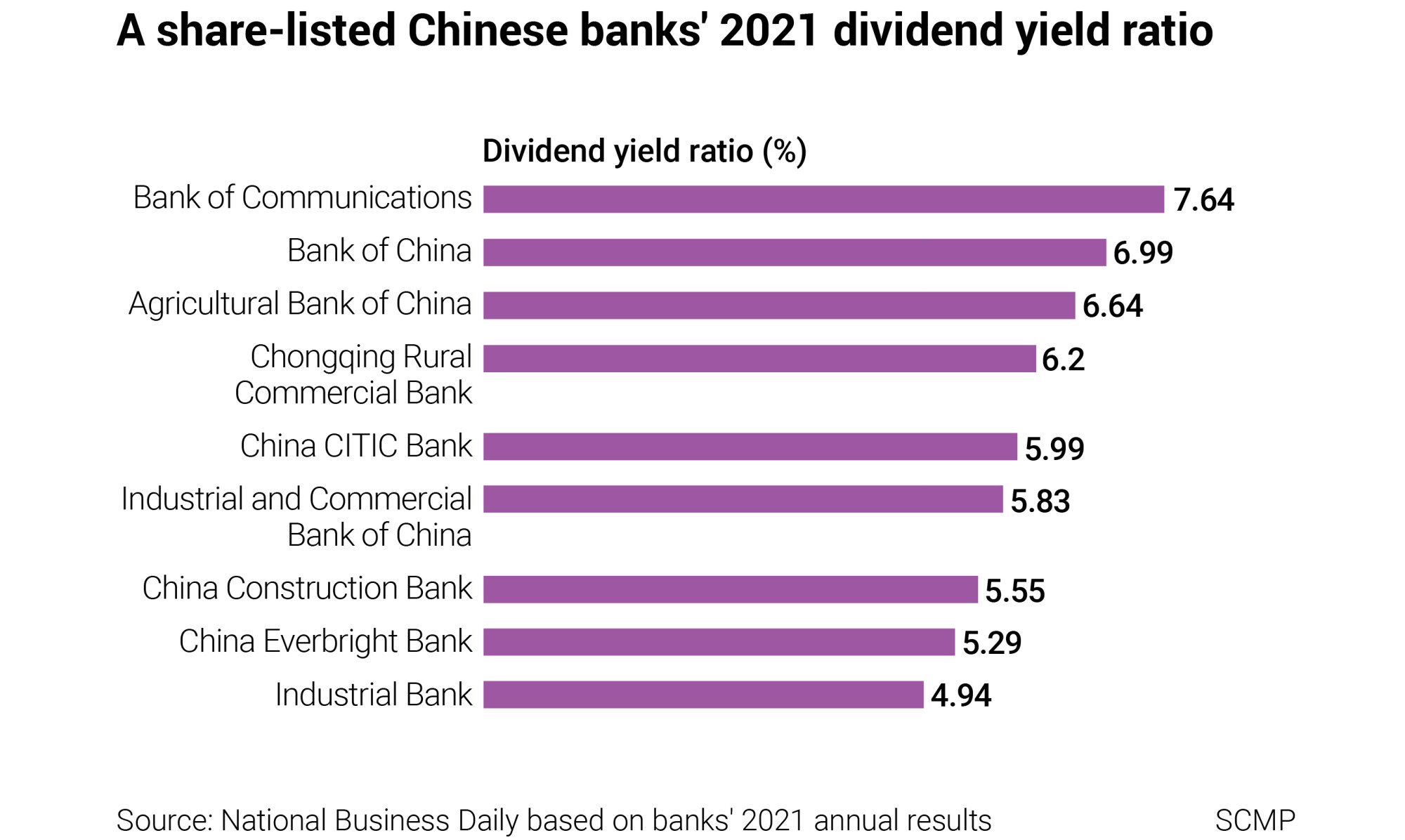
Chinese firms in CSI 300 Index pay a record US$157.2 billion in dividends for 2021: S&P Global
- Dividend payments by CSI 300 constituents have jumped over 150 per cent from 2012 to 2021
- Bank of Communications had the highest dividend yield of 7.6 per cent among its peers, another study showed
Dividend payments by onshore Chinese companies have risen over 150 per cent in the past decade, as investors value steady returns amid market volatility while firms use it to counter drop in share prices, according to an S&P Global Market Intelligence study released on Thursday.
The total dividend payout amount by companies in the CSI 300, which tracks the biggest stocks in Shenzhen and Shanghai, is set to exceed 1 trillion yuan (US$157.2 billion) for financial year 2021 for the first time, up from around 395.1 billion yuan in 2012, the report said.
“During equity market downturn conditions, the high dividend yield basket proved to be a defensive cushion against share price drops,” said S&P Market Intelligence analysts led by Ruiying Zhao. Investors also value consistent dividends to counter market volatility.
Mainland firms listed across all Chinese bourses paid a record 1.67 trillion yuan in dividends to shareholders in 2021, 17 per cent higher than 2020, according to separate data from the China Securities Regulatory Commission.

The CSI 300 dropped 2.7 per cent last year as large companies were hit by investor concerns on excessively high valuation, regulatory uncertainty and a slowing economy.
Chinese companies have in recent years been increasingly sharing a greater proportion of their profits with shareholders following encouragement from Beijing, as the country strives to get more of its stocks included into global indices such as the MSCI, which are tracked by investors.
The average dividend payout ratio – total dividend paid to shareholders divided by profit – jumped to nearly 30 per cent in China in 2021 from 15.5 per cent in 2012, the report showed.
Banking, real estate, utilities, cars, insurance, and construction and materials were among the high-yield sectors, with banks showing a stable payout ratio at around 30 per cent.
“Investment preference is changing, investors now are paying more attention to dividend payout, as Chinese companies’ growth rate has gradually slowed down in recent years,” said Alan Li, portfolio manager at Atta Capital in Hong Kong. “Investors are switching to a value-driven [mode] from a growth-driven pattern.”
A separate study by the National Business Daily showed that Bank of Communications had the highest dividend yield among its peers listed in Shenzhen and Shanghai.
Bank of Communications’ 0.355 yuan dividend per share gave it a dividend yield of 7.64 per cent. It was followed by Bank of China at 6.99 per cent, Agricultural Bank of China at 6.64 per cent and Chongqing Rural Commercial Bank at 6.2 per cent.

However, banks’ wealth management products have underperformed the dividend payouts by the banks themselves. The wealth products had an average return of 3.55 per cent in 2021, 34 basis points lower from a year earlier, according to data from China Banking Wealth Management Registration System.
The wealth products’ underwhelming returns triggered heated discussions among investors and in the press after Chinese bank executives said that stock traders should give the banking sector more consideration.
“The risk level of stocks and wealth management products are different,” said Li, noting higher volatility of stocks. “Bank stocks cannot replace wealth management products.”
He added that the stock market was likely to see net capital outflows due to lingering negative factors such as the ongoing US-China tensions and uncertainties arising from Russia’s invasion of Ukraine.

